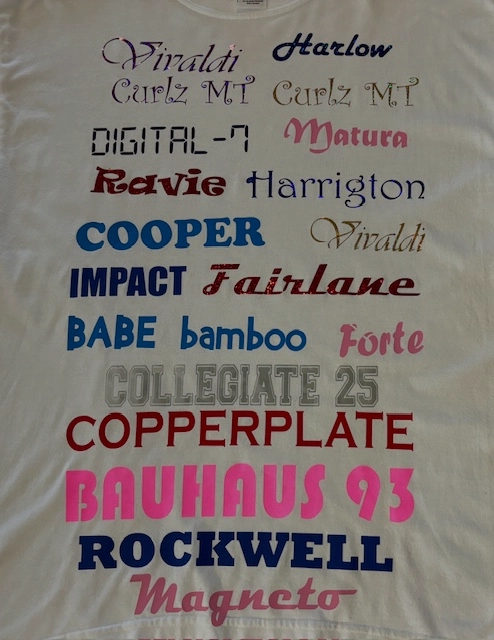Personalized School Uniforms with High-Quality Embroidery Services
Personalized School Uniforms with High-Quality Embroidery Services
Blog Article
The Art of Customized Embroidery: Unlocking the Tricks to Creating Special and Unforgettable Designs
The keys to producing custom needlework styles that captivate the eye and leave a lasting impact lie in a delicate balance of strategy, imagination, and attention to information. As we delve right into the world of custom needlework, we discover the nuanced interplay in between thread option, stitch intricacy, and style customization that raises a mere garment to a job of art.
Choosing the Right Needlework Threads
When selecting needlework strings, what key elements should you think about to make certain the very best outcomes for your personalized layouts? The choice of embroidery thread is vital in determining the final outcome of your embroidered style. Among the key factors to consider is the product of the thread. Different products such as cotton, polyester, rayon, and silk supply differing degrees of luster, durability, and appearance. It is important to pick a thread product that matches the textile you are stitching on and lines up with the desired look of the layout.
Furthermore, the weight or thickness of the string plays a substantial function in the appearance of the embroidery. Thicker threads can include measurement and structure to your design, while finer threads are ideal for detailed details and little text. In addition, taking into consideration the shade fastness and washability of the thread is crucial to guarantee that your customized designs keep their high quality and vibrancy in time. By carefully reviewing these aspects and choosing top quality strings that satisfy your particular needs, you can improve the visual allure and durability of your stitched developments.
Discovering Different Stitch Methods
To delve into the world of 'Exploring Various Stitch Techniques', one need to grasp the ins and outs and subtleties that each stitching approach brings to the art of embroidery. Various stitch techniques not only include visual rate of interest yet also contribute to the total texture and dimension of the layout. One popular stitch method is the satin stitch, which includes very closely packed parallel stitches to produce a smooth and glossy surface area, ideal for filling up in forms and developing bold describes.
On the various other hand, the backstitch is a functional technique typically made use of for outlining and adding fine details. It includes sewing in reverse to develop a strong line of embroidery. Additionally, the French knot stitch adds a tactile aspect to styles, excellent for developing distinctive accents like flower centers or decorative touches.
Exploring different stitch methods enables embroiderers to play with light, shadow, and depth within their styles, raising the visual charm and creative high quality of their embroidery jobs. By grasping different stitching methods, one can unlock endless possibilities for creating unique and memorable custom embroidery items.
Incorporating Personalized Layout Components
Having discovered the ins and outs of different stitch strategies such as the satin stitch, backstitch, and French knot, the focus currently moves in the direction of integrating customized layout aspects in custom needlework projects. Individualized style components play a critical function in making needlework projects absolutely distinct and remarkable.
One more means to incorporate tailored design components is by including signs or concepts that hold special definition to the recipient or look here reflect their rate of interests and individuality. For example, including a favorite blossom, pet, or hobby-related symbol can make the needlework layout more significant and personalized. Additionally, selecting shades that reverberate with the recipient or align with the designated motif can better enhance the personalization of the needlework task.
Understanding the Art of Color Coordination

One secret aspect of color control is understanding shade concept. This includes understanding just how different look these up colors connect with each other, the emotions they share, and how they can be integrated to develop visually attractive layouts. By using color theory principles, embroiderers can develop harmonious color combinations that boost the general appearance of the design.
Furthermore, taking note of contrast is vital in shade coordination. Using contrasting shades can aid particular elements of the design pop, boost legibility, and produce a visually dynamic embroidery item. By understanding the art of shade coordination, embroiderers can elevate their styles and develop memorable pieces that resonate with clients and customers alike.
Enhancing Appearance With Advanced Needlework Stitches
French knots, as an example, are excellent for including tiny, elevated dots to your layout, mimicking the look of beads or creating a textured surface. Bullion knots, on the other hand, can be used to create twisted, ropelike elements that add a lavish feeling to the needlework. Seed sewing includes small, scattered stitches that can complete areas go to these guys with a multicolor structure, while turkey work produces fluffy, dimensional accents reminiscent of animal hair or vegetation. Experimenting with these advanced needlework stitches permits you to press the borders of typical needlework and produce really distinct and visually appealing textures in your layouts.
Verdict
In verdict, the art of custom-made embroidery entails a combination of choosing the ideal threads, discovering different stitch techniques, including individualized design components, mastering shade sychronisation, and enhancing structure with advanced stitches. By recognizing and executing these vital aspects, embroiderers can create special and memorable layouts that showcase their imagination and skill. Embroidery fanatics can unlock the tricks to developing stunning and custom pieces that stick out and leave a lasting perception.
Report this page